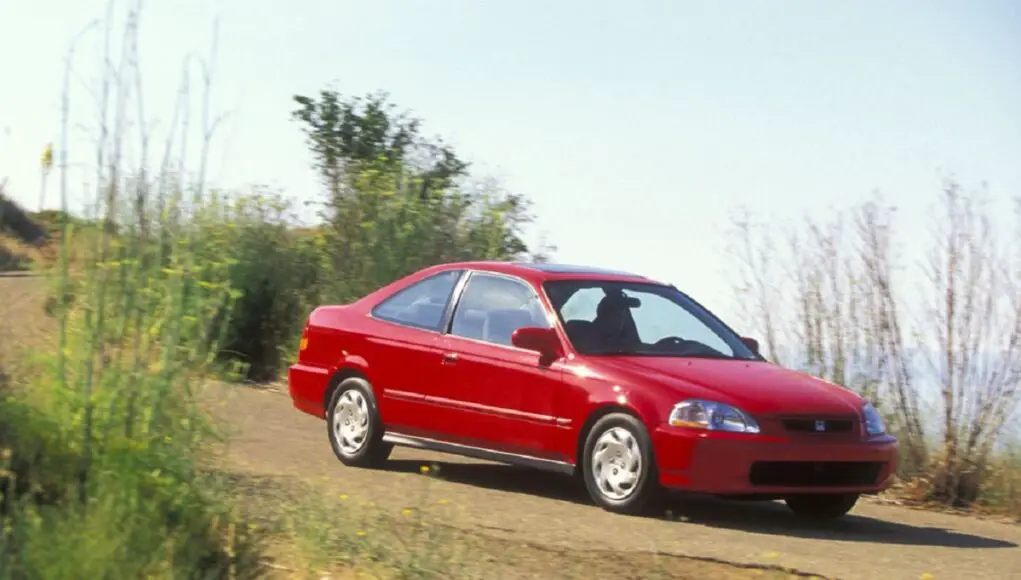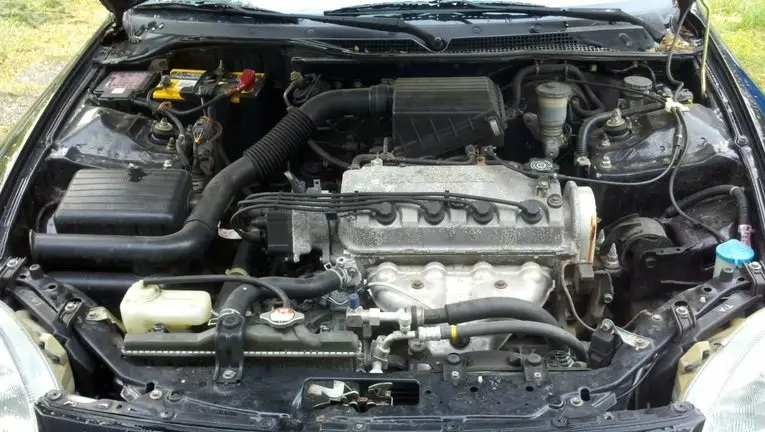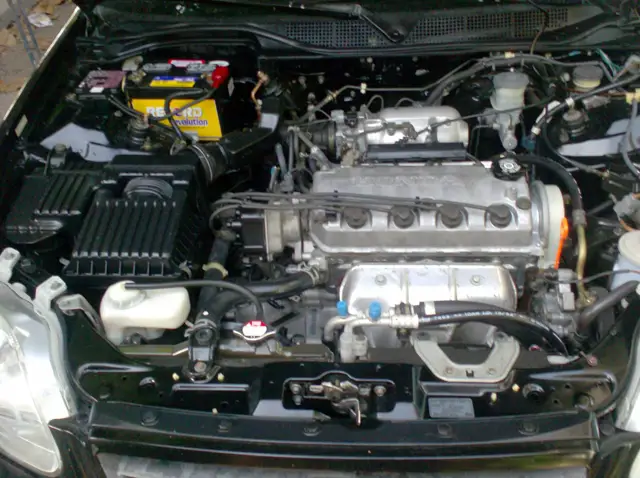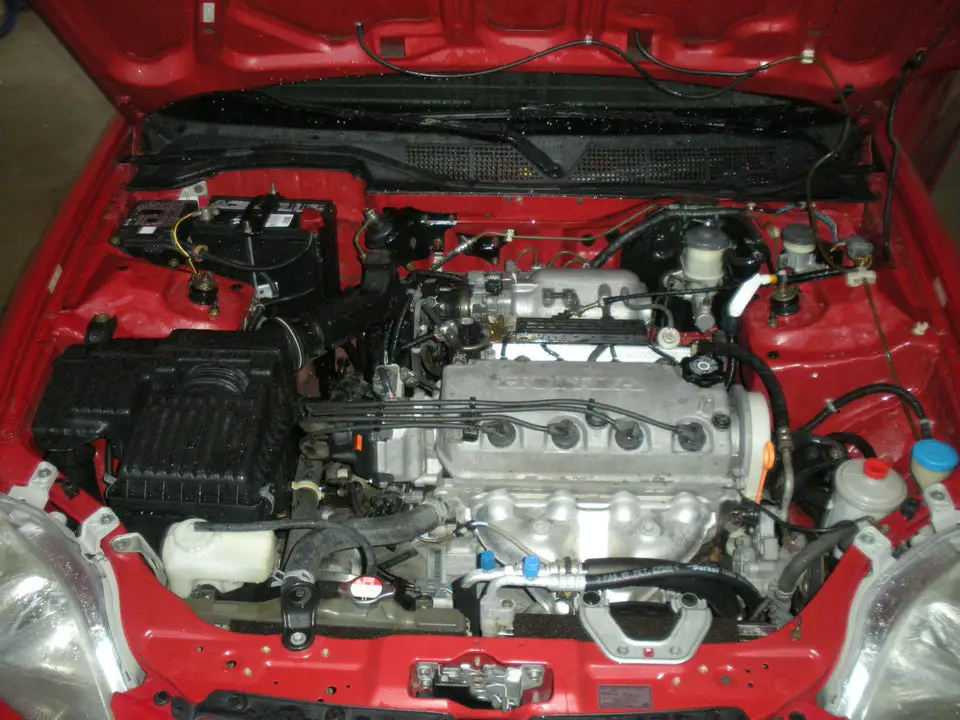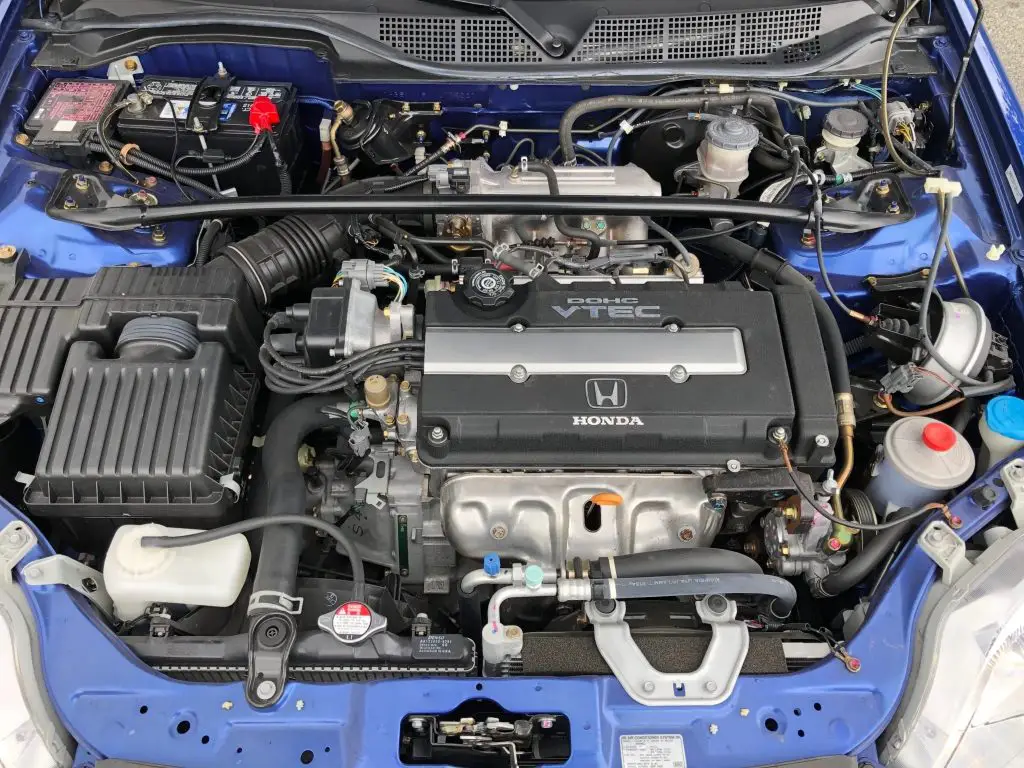Check these items before you drive off with a signed title, and it’s too late.
Affordable, sporty, easily modifiable, and good looking after 20 years, the 6th gen Honda Civic offers a lot of value for little money. Finding a decent one in fair condition is getting harder. Despite that, there are plenty of good used 1996-2000 Honda Civics that make their way on classifieds. Here are 10 items YOU MUST check before buying these Golden Era Hondas.
(*Note, this list can also apply to 1992-1995 MY Civics.)
10. Verify the VIN matches up with the trim level your Honda Civic claims to be.
The VIN is found, as illustrated below, at the base of the windshield, driver’s side door jamb, and on a sticker of non-removable parts. Input that 17-digit identification number in any number of online Honda VIN decoders (like this one) and double check that the trim level and engine spec matches with what you find on the car.
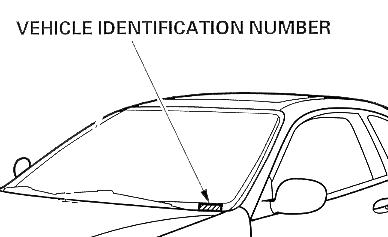
9. Have a general idea how to identify a VTEC vs. Non-VTEC engine
Past a certain RPM, the VTEC system engages a larger lobe on the camshaft profile for peak horsepower.
As you can see below, among the D16 engines you’re bound to come across, there’s a 21 HP difference between Y7, Y5, and, Y8. It’d be a shame if the person selling to you claimed, “Yes, this has VTEC,” but, when you buy it, realize VTEC never engages because you bought a NON-VTEC engine.
Here are the most common engines you’ll find in a 96-00 Honda Civic from Top to Bottom, left to right. The Non-VTEC D16Y7, D16Y8, D16Y5, and B16A2. Note the intake tube differences.
Here are the trim levels, what engine you should find under the hood, their power ratings, whether it’s VTEC or NON-VTEC, VTEC engagement point, and if there’s a tach.
| Trim | Engine | Power | VTEC | RPM Engagement | Tach? |
| CX, DX, VP, LX | D16Y7 | 106 HP/ 103 lb-ft | No | N/A | Only LX |
| HX | D16Y5 | 115 HP/104 lb-ft | VTEC-E | 5,500 RPM | Yes |
| EX | D16Y8 | 127 HP/107 lb-ft | Yes | 5,500 RPM | Yes |
| Si | B16A2 | 160 HP/111 lb-ft | Yes | 5,600 RPM | Yes |
As you can see, a visual rule of thumb is you can expect a non-VTEC engine if you don’t see a tachometer in the gauge cluster.
Towards the end of your test drive, try to safely engage VTEC while accelerating. You should feel and hear a slight increase in engine noise. If it doesn’t engage properly or, at all, there is a problem with the VTEC system.
8. Pay special attention to the four-speed automatic transmission.
While the same year Odyssey and Accord Automatics had their reliability problems, the 96-00 Honda Civic Automatics were generally OK.
But Honda automatics are notoriously finicky. If the previous owner did not follow the owner’s manual exactly, which requires Honda ATF only, performing drain and refills (no flushes,) and never overfilling/under-filling, problems followed.
A slipping automatic might only manifest once warmed up, so pay attention to shifts after reaching operating temperature.
If you ask politely, and the owner says OK, do a stall test (where you mash the brake, then gas for ONLY a few seconds) as illustrated below. This will reveal how good the automatic is. You do NOT want to perform this test too long as the ATF heats quickly.
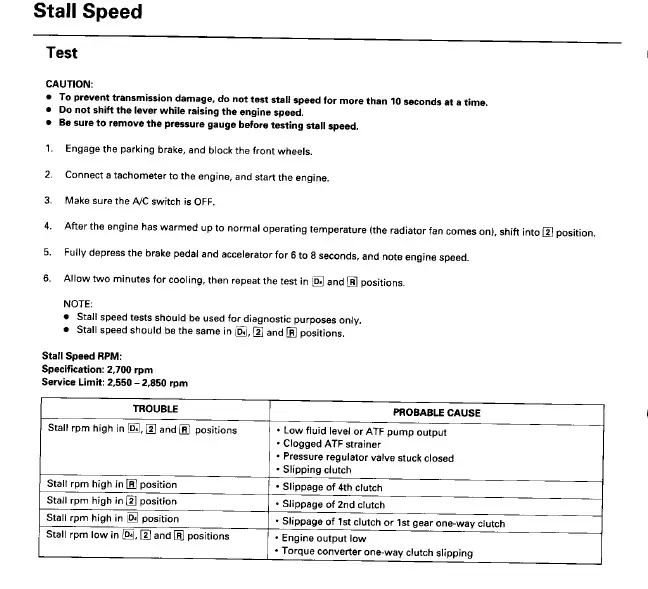
Finally, after the test drive and with the engine OFF, check the ATF level using the dipstick on the passenger side of the engine bay, location illustrated below.
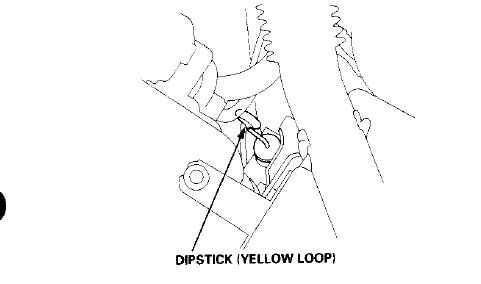
7. If the owner claims no accidents, double check all body panels for VINS, all glass should have Honda logos.
While most used 96-00 Civics will have over one owner and over 100,000 miles if the owner says, “this one’s never been in an accident” verify his claim by looking for the car’s VIN on every fender, hood, trunk, bumper covers, and door wells. If it’s different or not there, the body panel has been replaced, indicating possible damage in the past.
Also, if the owner says “it’s all original glass” verify this by looking for a Honda emblem on every piece of glass. Aftermarket glass won’t have a Honda logo.
6. Check for frame damage
Besides the above, pay attention to how everything lines up. Are the gaps between the hood and fender, doors, trunk and fender consistent? Slight variations are acceptable considering these are older cars.
Is it easy to close and open all doors? Hard to close doors means something underneath is not lining up.
Look underneath the spare tire cover and in the engine bay with a flashlight for fresh seam welds and wrinkles in the metal, signs of a front or rear collision.
5. Verify odometer readings with a Carfax and look for telltale signs of high-wear if it’s suspiciously low-mileage.
Fact: Taking out and swapping in Civic odometers with low-mileage is just a matter of swapping in a new cluster or unscrewing the odometer box behind the speedometer.
This makes it easy to upgrade clusters, but it also makes it easy to swap in a low-mileage odometer readout on a high-mileage car.
If you come across a sub-100,000 mile Civic but the driver’s seatbelt takes too long to retract (or doesn’t retract at all,) there’s wear-holes in the driver’s seat, or several radio buttons have worn to white, that means this is probably not a low-mileage Civic.
4. An extremely low idle RPM after warmup is a bad sign.
’96 means OBD-II. That also means owners can clear codes and erase the ECU before you show up. A telltale signis an extremely low idle RPM after warmup since the ECU now has to re-learn everything.
Stock idle RPM for Civics after warming up is well above 500 RPM, around 650 rpm.
An extremely low idle RPM means stopped, you might see the idle hit 200 RPM and below.
3. Check for rust spots.
Bring a flashlight and check for rust under all the fenders wheel wells, and rocker panels. If you can, remove the floor mats and take a peek under the carpets as water can seep underneath.
Open the trunk and look in the spare tire well as a plugged up drain hole can lead to collecting water and rust.
2. Check if the Civic suspension’s been lowered by paying attention to the tires and signs of a scraped undercarriage.
Lowering a Civic with springs or coilovers doesn’t take long, just a few hours. Without a proper alignment, ball joints, axles, and bushings wear out faster. Worn out part replacement gets passed on to you, a price negotiating point.
If the Civic’s at stock height but you suspect it’s been lowered, look under all the fenders and check for wear marks where the tire would’ve made contact with the top of a plastic fender well or a metal fender.
Pay attention to the lowest points in the undercarriage, typically the lower control arm pivot points, and check they show no signs of scraping.
Look at the tires for uneven wear, specifically camber wear, where one side has more tread than the other side.
Fresh tires will hide a previous lowered life.
1. Inquire about all maintenance records, most importantly timing belt and water pump.
Honda recommends a new timing belt every 105,000 miles. If you come across a Civic with 170,000 miles and the owner doesn’t remember if he’s done it, he probably hasn’t and, if you purchase this Civic, it would behoove you to do a timing belt job A.S.A.P.
While you’re replacing the timing belt, replace the water pump, too.
You can find belts and the pump, both for less than $100. If you pay someone, expect to pay at least $400 for parts and labor.
Again, lack of timing belt maintenance is something to keep in mind negotiating the final price.


